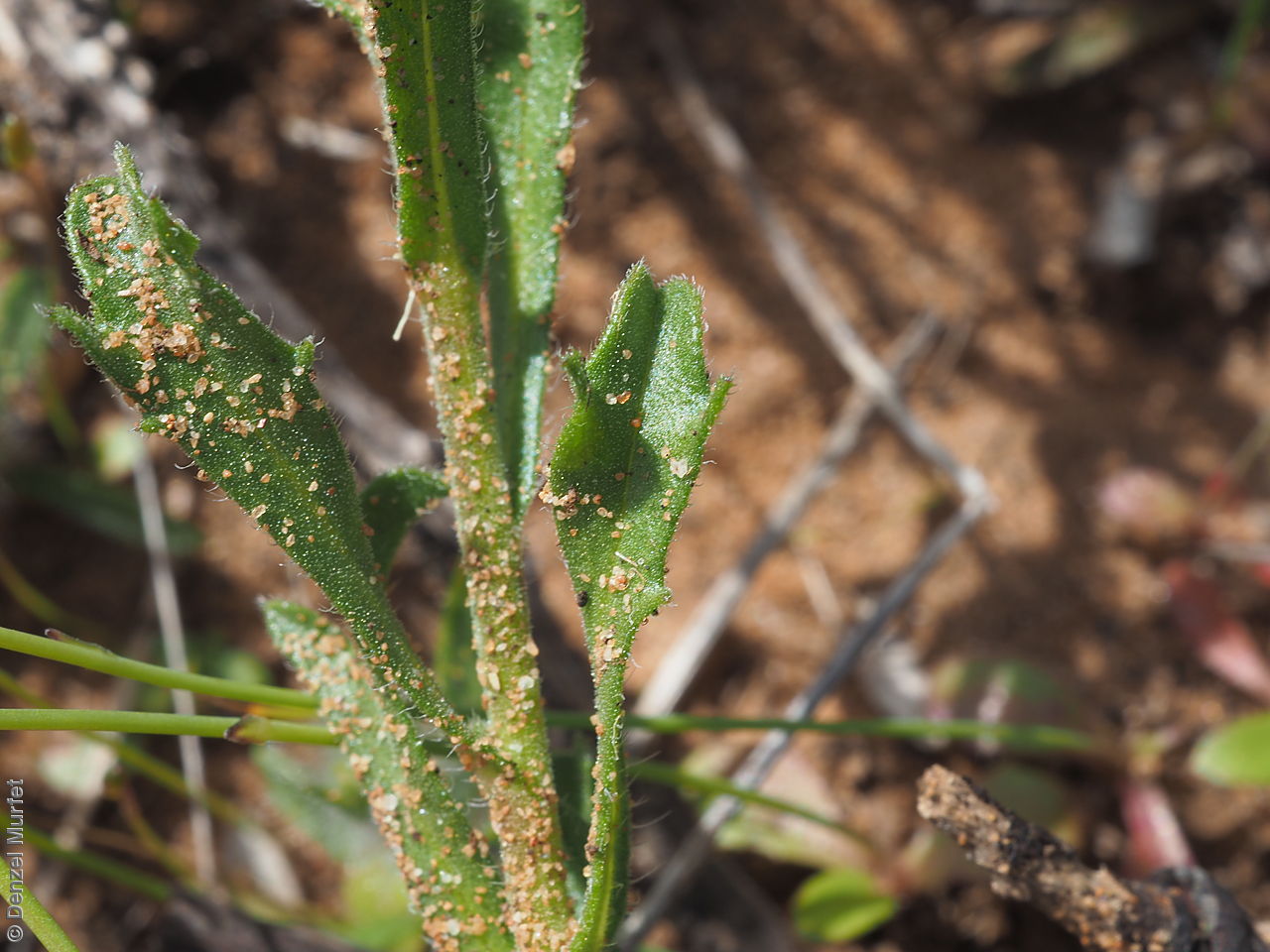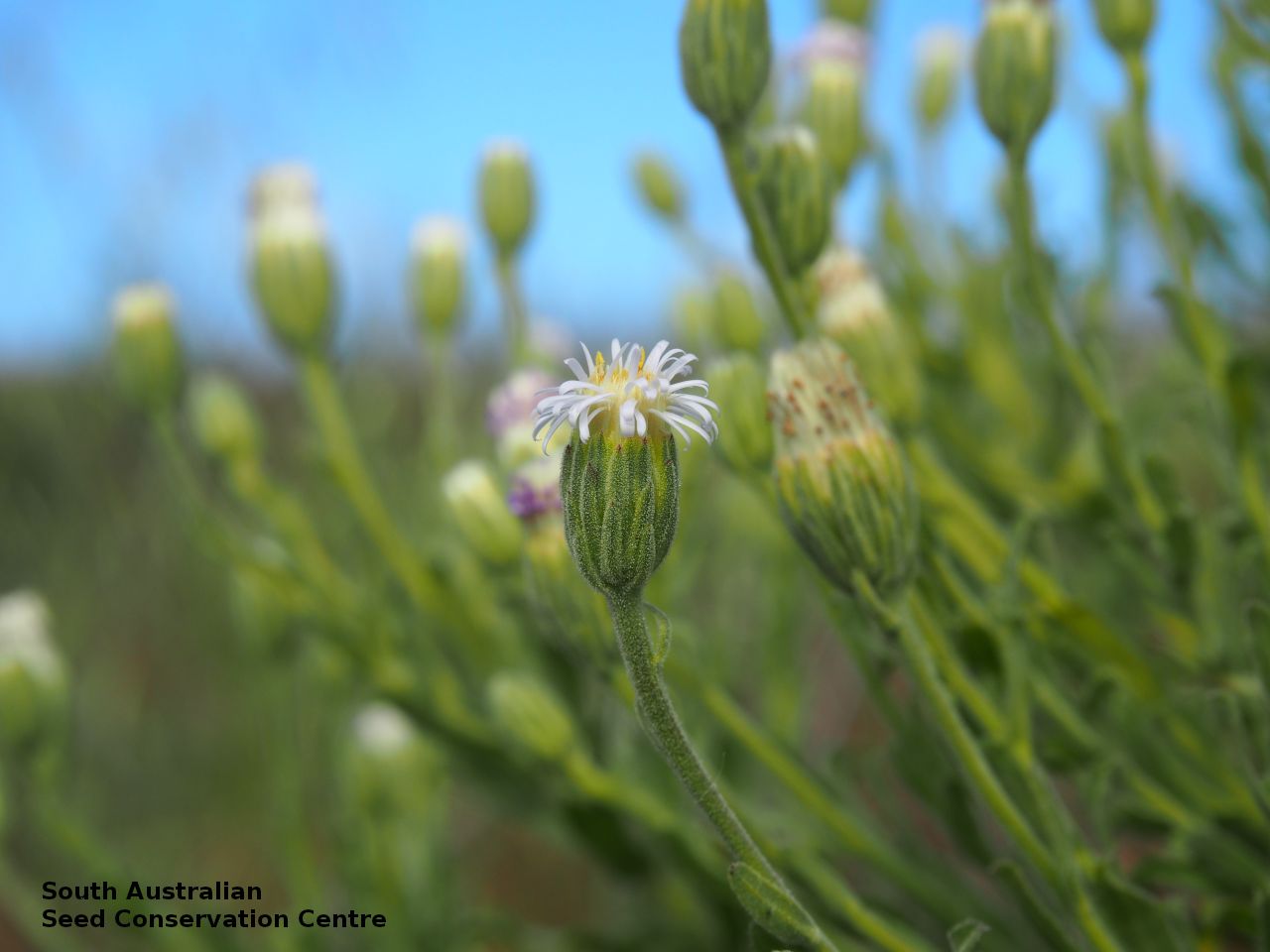





















Botanical art
Prior names
Diplopappus australasicus
Common names
New Holland Daisy
Sticky New Holland Daisy
Etymology
Vittadinia named after Carlo Vittadini (1800-1865}, an Italian doctor and mycologist, author of several important works on Italian mushroom species. Australasica means of or from Australasia; referring to the species distribution.
Distribution and status
Found in the southern part of South Australia, growing on sandy soils in a variety of habitats including woodland, mallee and cleared ground. Also found in Western Australia and Victoria. Native. Common in South Australia. Common in the other states.
Herbarium regions: Nullarbor, Flinders Ranges, Eyre Peninsula, Murray, Yorke Peninsula, Southern Lofty, Kangaroo Island, South Eastern, Green Adelaide
AVH map: SA distribution map (external link)
Plant description
Annual or short-lived perennial herb to 30 cm high with leaves and stems covered in glandular hairs, often sticky. Leaves oblanceo-late to narrowly obovate, to 30 mm long and 8 mm wide, entire or with 1 or 2 pairs of small teeth above midway, apex obtuse to acute, often recurved. Ray florets mauve to white. Flowering between September and November. Fruits are large fluffy creamy daisy head. Seeds are yellow semi-flat long ovoid seed to 4.5 mm long and 1 mm wide, surface with parallel striation and hairs and pappus as long as seed. Seed embryo type is spatulate fully developed.
Seed collection and propagation
Collect seeds during November. Collect heads that are fluffy. Either pick off the whole heads or use your finger and pull off the seeds from the head. Mature seeds will come off easily. Place the heads in a tray for a week to dry. No cleaning is required if only pure seeds are collected. If heads are collected, then rub the heads gently with your hands to dislodge the seeds. Viable seeds will be fat and hard. Use a sieve to separate the unwanted material. Store the seeds with a desiccant such as dried silica beads or dry rice, in an air tight container in a cool and dry place. From one collection, the seed viability was high, at 100%. Seeds are non-dormant, viable seed should germinate readily without any treatment.
| Location | No. of seeds (weight grams) | Number of plants | Date collected | Collection number Collection location | Date stored | % Viability | Storage temperature |
|---|---|---|---|---|---|---|---|
| BGA MSB | 7,000 (6.3 g) 7,000 (6.3 g) | 50 | 10-Nov-2004 | MKJ46 Eyre Peninsula | 31-Mar-2006 | 100% | -18°C |
| BGA | 21,800 (20.45 g) | 30+ | 30-Oct-2015 | DJD3206 Northern Lofty | 2-May-2017 | 100% | -18°C |
Number of plants: This is the number of plants from which the seeds were collected.
Collection location: The Herbarium of South Australia's region name.
% Viability: Percentage of filled healthy seeds determined by a cut test or x-ray.